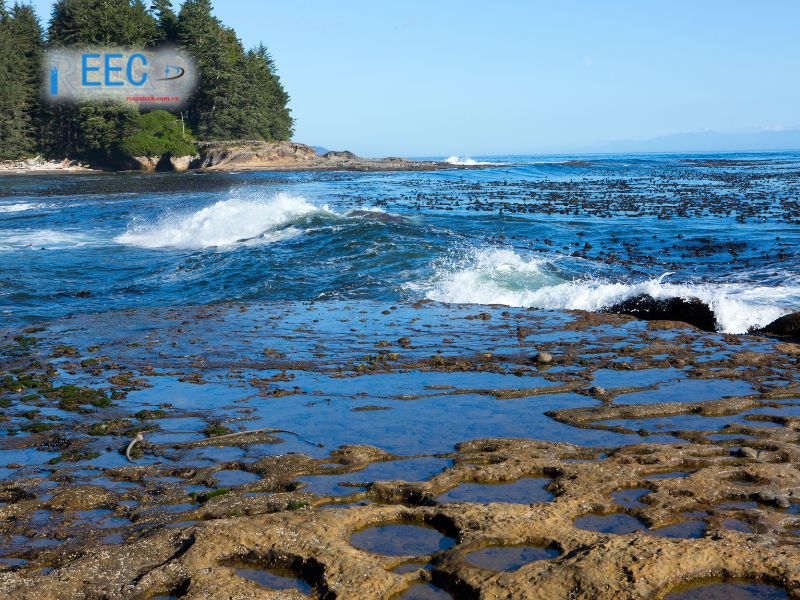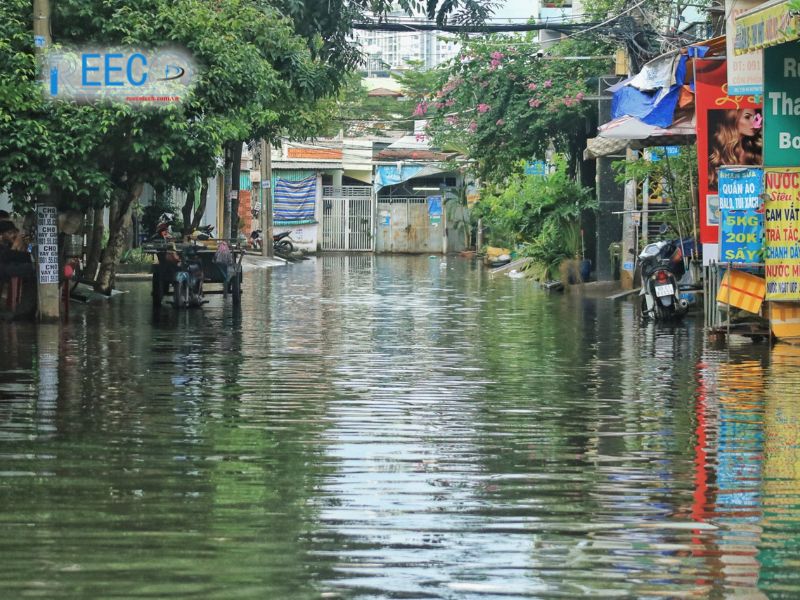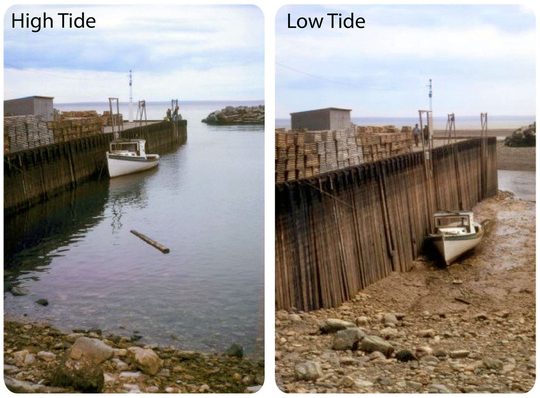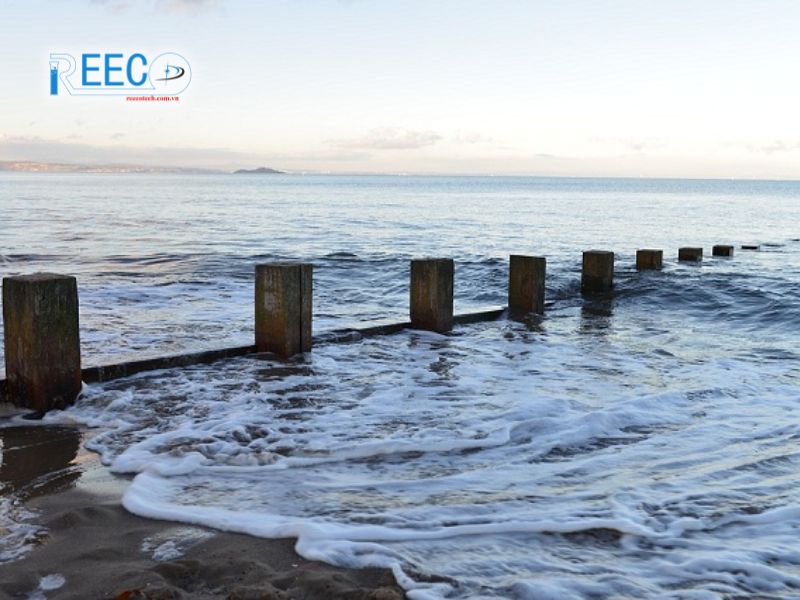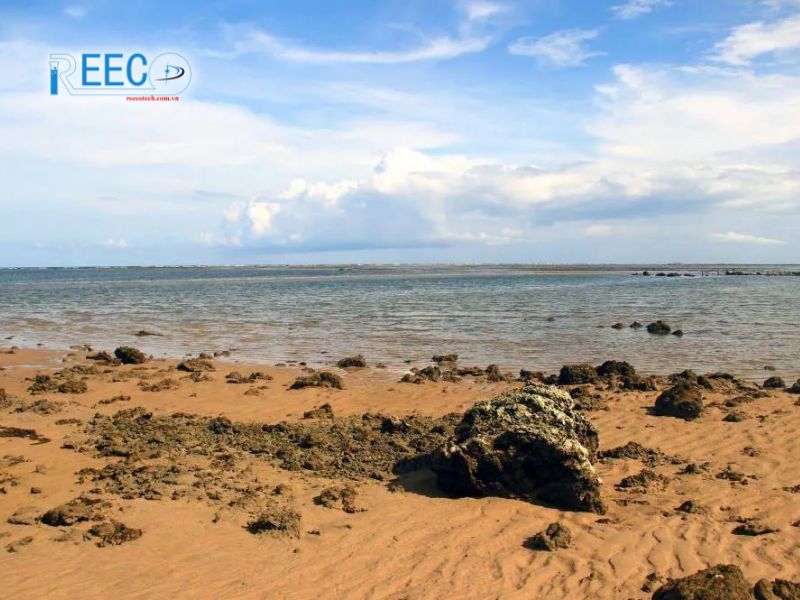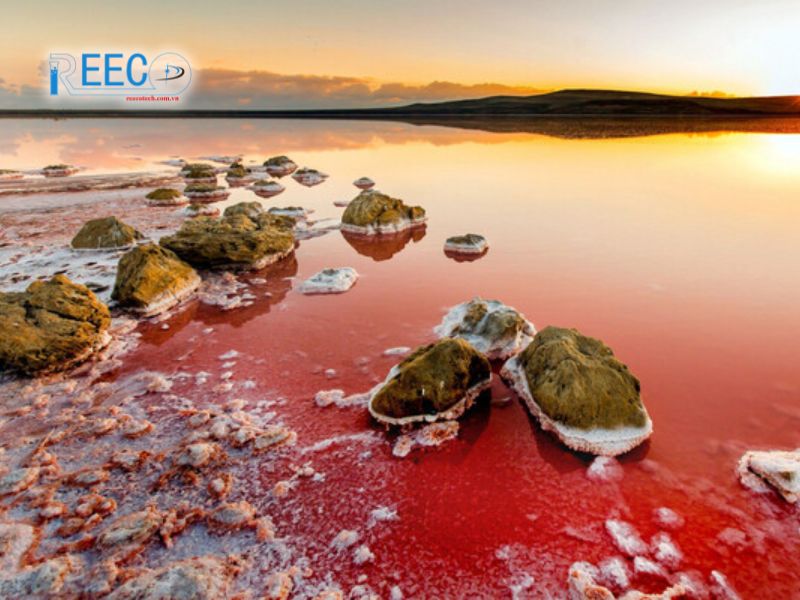Understanding tides will help you grasp why this phenomenon can have significant impacts on both nature and humans. Tides are an important natural occurrence that affects our lives and is related to various issues. In the article below, let’s explore the tide phenomenon, its characteristics, and the most effective ways to forecast tides with Reecotech.

What are Tides?
Tides are the regular rise and fall of sea and river water levels, typically occurring 2-3 times a day. This phenomenon is primarily caused by the gravitational forces of the Sun and the Moon acting on the Earth.
Tides are the rise and fall of sea levels caused by the combined effects of the gravitational forces exerted by the Moon (and to a much lesser extent, the Sun) and are also caused by the Earth and Moon orbiting one another.
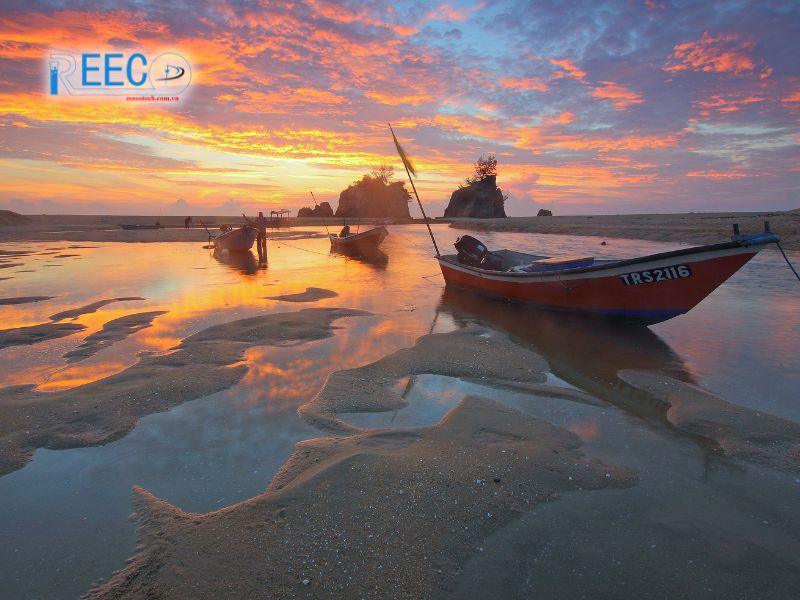
What Causes the Tide Phenomenon?
The tide phenomenon arises from various factors, but there are three main elements:
- Gravitational Forces of the Moon and the Sun: Both the Moon and the Sun exert gravitational forces on the Earth. However, the Moon’s gravitational pull is stronger, accounting for about ⅔ of the total gravitational force affecting the Earth. This force causes the Earth’s water to bulge, creating an elliptical shape with a peak directly facing the Moon (known as the first high tide zone).
- Centrifugal Force from Earth’s Rotation: The centrifugal force caused by Earth’s rotation causes the water to bulge outward, forming a second elliptical peak opposite the first high tide zone, known as the second high tide zone.
- Gravity and Tidal Forces: The combined gravitational forces from the Sun and the Moon, along with Earth’s gravity, primarily create high tides, causing the sea surface to bulge at points closest to and farthest from the Moon. As the Earth rotates, tidal forces generate tidal waves, resulting in the regular rise and fall of sea levels throughout the day.
In addition to these primary causes, tidal phenomena and tidal heights also depend on Earth’s gravitational pull, coastal topography, wind, and atmospheric pressure. When the gravitational forces of the Moon and the Sun align, it leads to exceptionally high tidal waves.
Related concepts of tides
After understanding the causes of tides, here are some concepts related to this phenomenon:
a/ High Tide: This is the point in the tidal cycle when the sea level reaches its highest. High tide occurs two to three times a day and is when the sea level is at its peak.
b/ Low Tide: Low tide is the point in the cycle when the sea level reaches its lowest. This occurs two to three times a day, marking the lowest sea level.
c/ Semidiurnal Cycle: This is the time interval between two consecutive high tides or two consecutive low tides. This cycle indicates the duration that a specific location on Earth experiences from one high tide to the next high tide or from one low tide to the next low tide.
These concepts help us better understand the characteristics of tides, their effects, and their impact on the environment.
Characteristics and Timing of Tides
Here are three key characteristics of tides:
a/ Tidal Stages
The stages of tides include:
- Flood Tide: Occurs when sea level rises over several hours, flooding intertidal areas.
- High Tide: When the water reaches its highest point.
- Ebb Tide: Sea level falls over several hours, exposing intertidal areas.
- Low Tide: When the water reaches its lowest point.
b/ Identification Characteristics
Tides can be identified by several specific features:
- Tidal Flooding: When sea levels rise and cover the areas where the sea meets the land.
- Tidal Surge: In large, bulging continental shelves, the tidal surge will be higher.
- Low Tide: Water reaches its lowest level when it reaches islands in the ocean.
- Flood Current: Not strong in open oceans, but river mouths and coastal bays can affect the flow of the flood and ebb tides.
- Tide Blocking: As the Earth rotates, massive landmasses bulge out, blocking the flood tide from moving westward.
- Ebb Tide: The phenomenon of water receding after the flood tide.
c/ Cycle and Frequency
Here is detailed information on the cycle and frequency of tides:
- Flood Tide Cycle: Has a periodic cycle that varies approximately every 12 hours and 25 minutes.
- Daily Frequency: Due to the gravitational forces of the Moon and the Sun, there are typically three high tides, consisting of two higher and one lower. Another related phenomenon is the lunar eclipse, which is linked to the cycles of the Moon and the Sun. Refer to the cited articles for more detailed information on this phenomenon.
These characteristics enhance our understanding of tides, tidal currents, and the impact of tides on the marine environment.
=> Explore marine meteorological measurement devices at Reecotech.
Common Types of Tides
Tides are categorized into three main types, as follows:
Diurnal Tide
This type of tide involves a single rise and fall of sea level within a day, resulting in one high tide and one low tide. The timing of high and low tides is approximately 24 hours apart. For example, if the water level falls at 10 AM today, it will fall at around 11 AM the next day. Similarly, high tides follow this cycle.
Semidiurnal Tide
Semidiurnal tide refers to the occurrence of two high tides and two low tides in a day, creating uneven tidal peaks. This type of tide primarily occurs in equatorial regions. Each day will experience two high tides and two low tides, with intervals of approximately 12 hours and 25 minutes.
Mixed Tide
Mixed tide is a combination of both diurnal and semidiurnal tides, characterized by irregular fluctuations in sea level throughout the day. A mixed tide can have two high tides and two low tides, but the levels of rising and falling water are uneven.
In addition to these three main types, there are two other common types of tides: black tide and spring tide. You can explore these further to distinguish between them and gain a better understanding of the tide phenomenon and its impact on the environment.
Why is monitoring tides important?
Tides play a crucial role in various areas, including:
- Supporting Ecosystems: Tides deliver nutrients from the seabed to the surface, remove toxins, and clean stagnant water, creating favorable conditions for aquatic life.
- Exploiting Marine Resources: Tides support fishing activities, aiding in the harvesting of fish and shrimp, thus boosting income and stabilizing the economy for coastal communities.
- Protecting Land: Tides help limit saltwater intrusion, regulate climate, and reduce risks from natural disasters such as storm surges, hurricanes, and floods.
- Sediment Deposits: Tides contribute to the growth of coastal plants and animals, improving soil quality and habitat for various species.
Therefore, monitoring tides is essential for:
- Forecasting and Determining Tide Cycles: This assists in navigating and managing maritime traffic, reducing risks, and optimizing cargo transportation activities.
- Resource Management: Tides provide valuable data for fishing and renewable energy exploitation in coastal areas.
- Conserving and Developing Coastal Ecosystems: Ensuring habitats for marine life and maintaining ecological balance.
- Studying Natural Patterns: Analyzing tidal data helps to understand natural laws and environmental fluctuations.
- Risk Management and Weather Hazard Prevention: Early warnings about phenomena like tsunamis, storms, and floods help protect communities and infrastructure.
How to forecast tides using technology
Modern technology has significantly enhanced the accuracy and effectiveness of tide forecasting. Here are the main methods and technologies used:
- Satellite Observations: Space-based satellite observations provide detailed data on sea level and related climate changes, enabling precise monitoring and forecasting of tides.
- Altimetry Radar: Radar technology measures the height of the sea surface from satellites, allowing for the analysis and forecasting of sea level changes.
- Sensor Systems and Buoys: Positioned strategically along coastlines, sensor systems record real-time sea level data, providing crucial information for tide analysis. Pressure-measuring buoys monitor water pressure and its variations on the seafloor, ensuring continuous sea level tracking.
- Computer Models: Mathematical and physical models simulate ocean hydrodynamic processes, helping to accurately forecast sea levels and tidal phenomena.
- IoT Technology (Internet of Things): IoT networks collect and transmit data on sea levels, pressure, and other tide-related factors. This technology enables remote and continuous sea level monitoring.
- Mobile Apps and Forecasting Software: Mobile apps provide tide forecasts to users, including fishermen, tourists, and experts. Software such as Thời Tiết 4M analyzes and forecasts detailed information about sea level timings, heights, and cycles.
These technologies play a crucial role in improving the accuracy of tide forecasts, enhancing management, and responding to natural phenomena.
=> Learn more: Tide Sensor 5217/5217R
Frequently asked questions about tides
Here are some answers to common questions about tides:
-
Can Tides Cause Flooding?
Tides can cause flooding in low-lying coastal areas, especially when high tide coincides with extreme weather events such as storms, heavy rain, and tropical depressions. Coastal cities like Ho Chi Minh City, Bangkok, and Jakarta frequently face flooding risks due to the combination of high tides and heavy rainfall.
-
Are Tides Easy to Observe?
Tides are relatively easy to observe, especially in coastal areas. The noticeable change in water level throughout the day makes it easy for residents and visitors to detect. During high tide, the sea level rises higher on the shore, while during low tide, the water recedes, exposing more of the shoreline. Tide tables are readily available online or through mobile apps, providing accurate information on when sea levels will rise and fall.
-
Does Vietnam Experience Tides?
Due to its geographic location near the equator and its proximity to the East Sea, tides are very common in Vietnam. Tides significantly impact various economic activities and daily life, particularly in the fishing industry and water transport. You can observe tides most noticeably in areas such as the Gulf of Tonkin, the East Sea, and the Mekong Delta. Ho Chi Minh City often experiences flooding due to high tides during the rainy season.
Conclusion
Understanding tides, their causes, effects, and roles is crucial. While this phenomenon is an unavoidable natural part of our environment, with knowledge and advanced technology, we can manage and respond to it more effectively.

